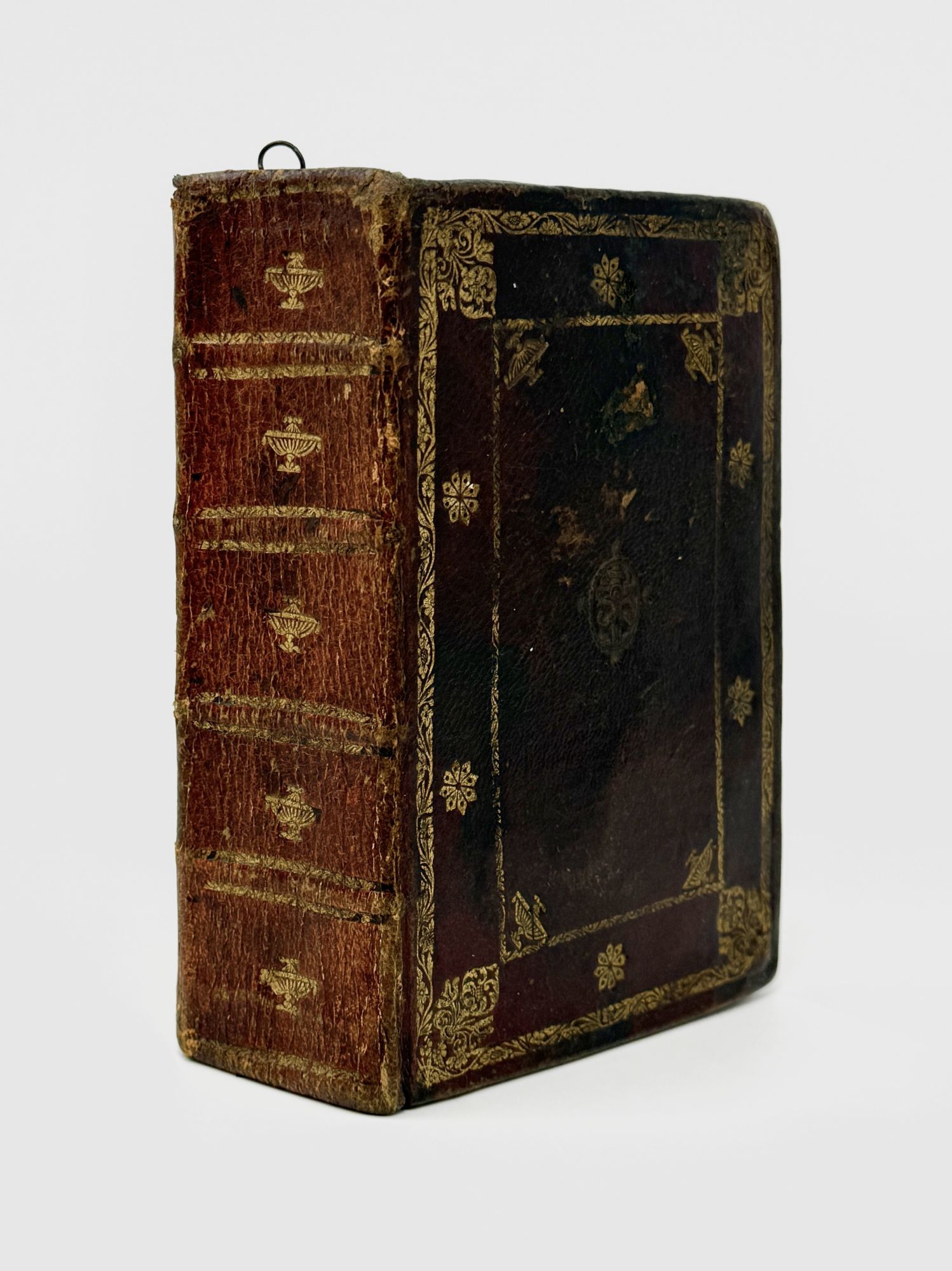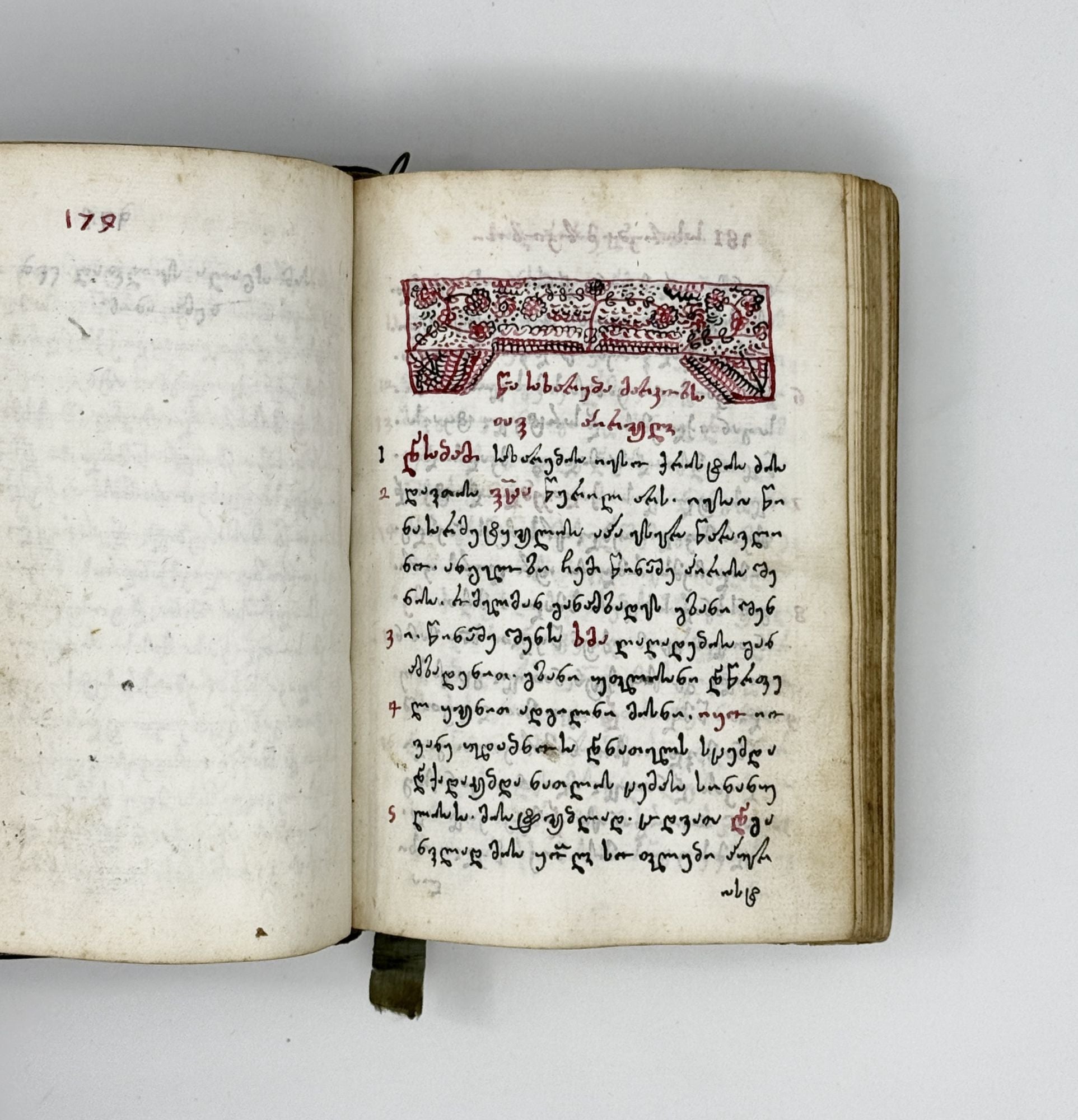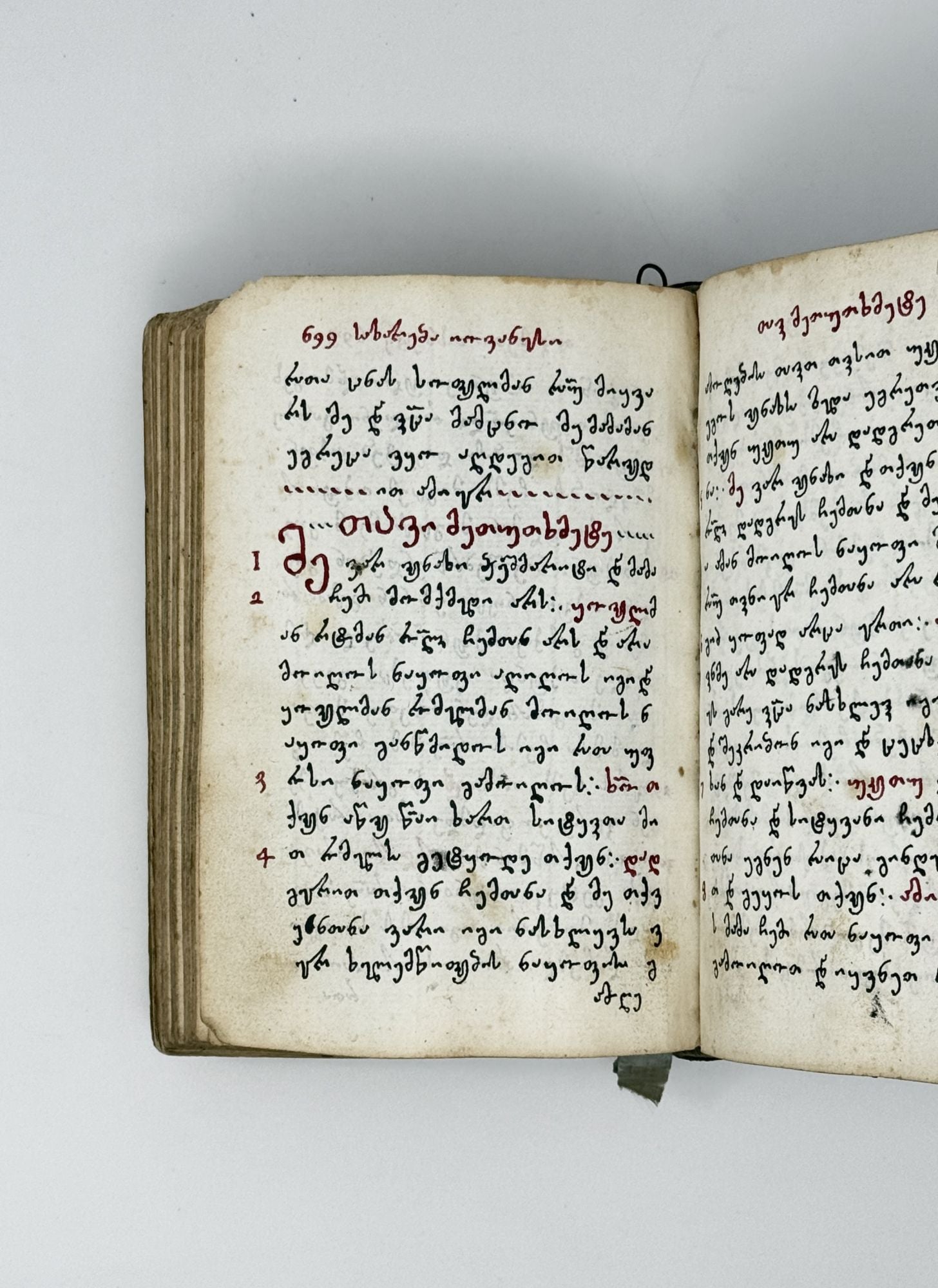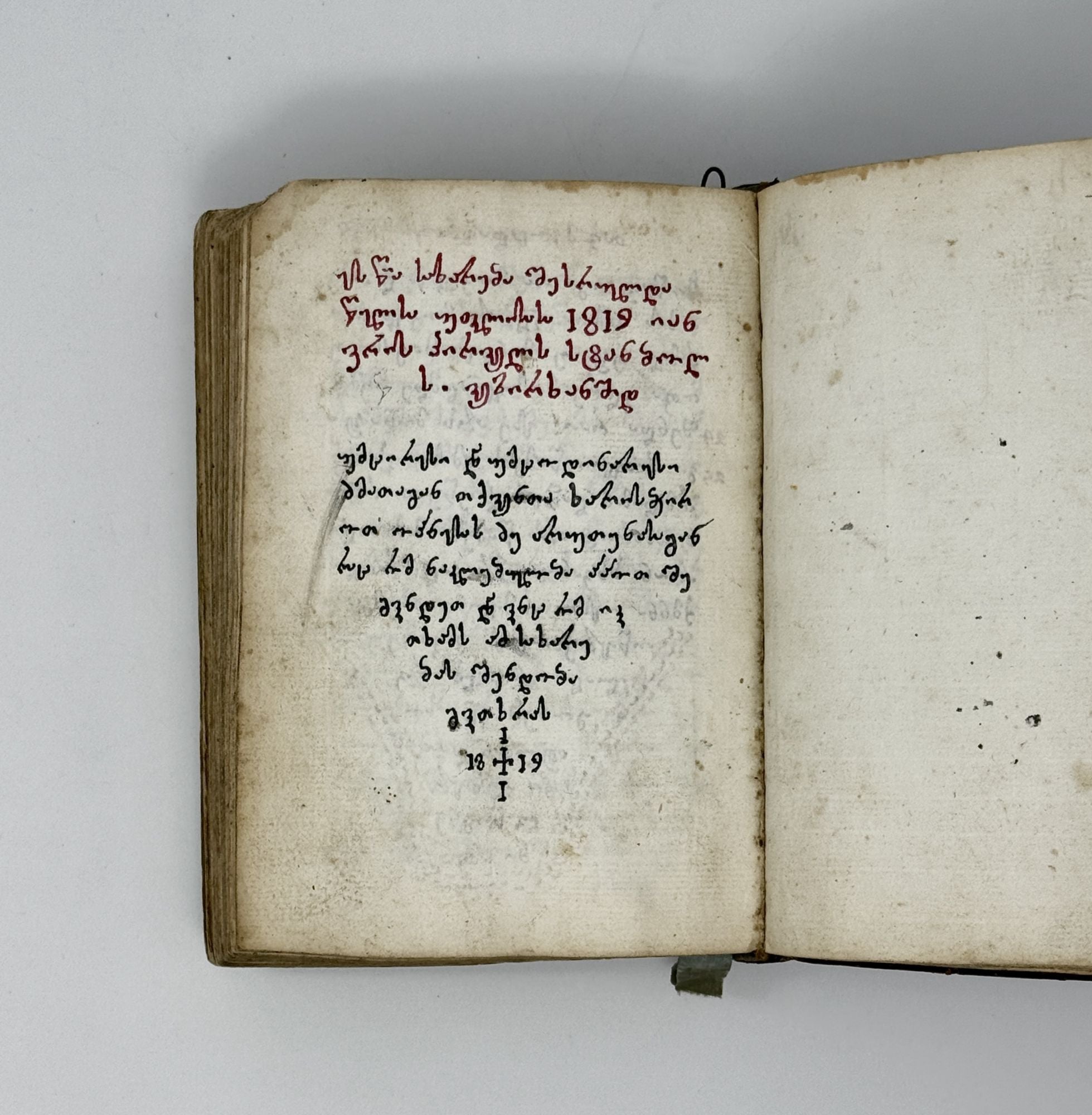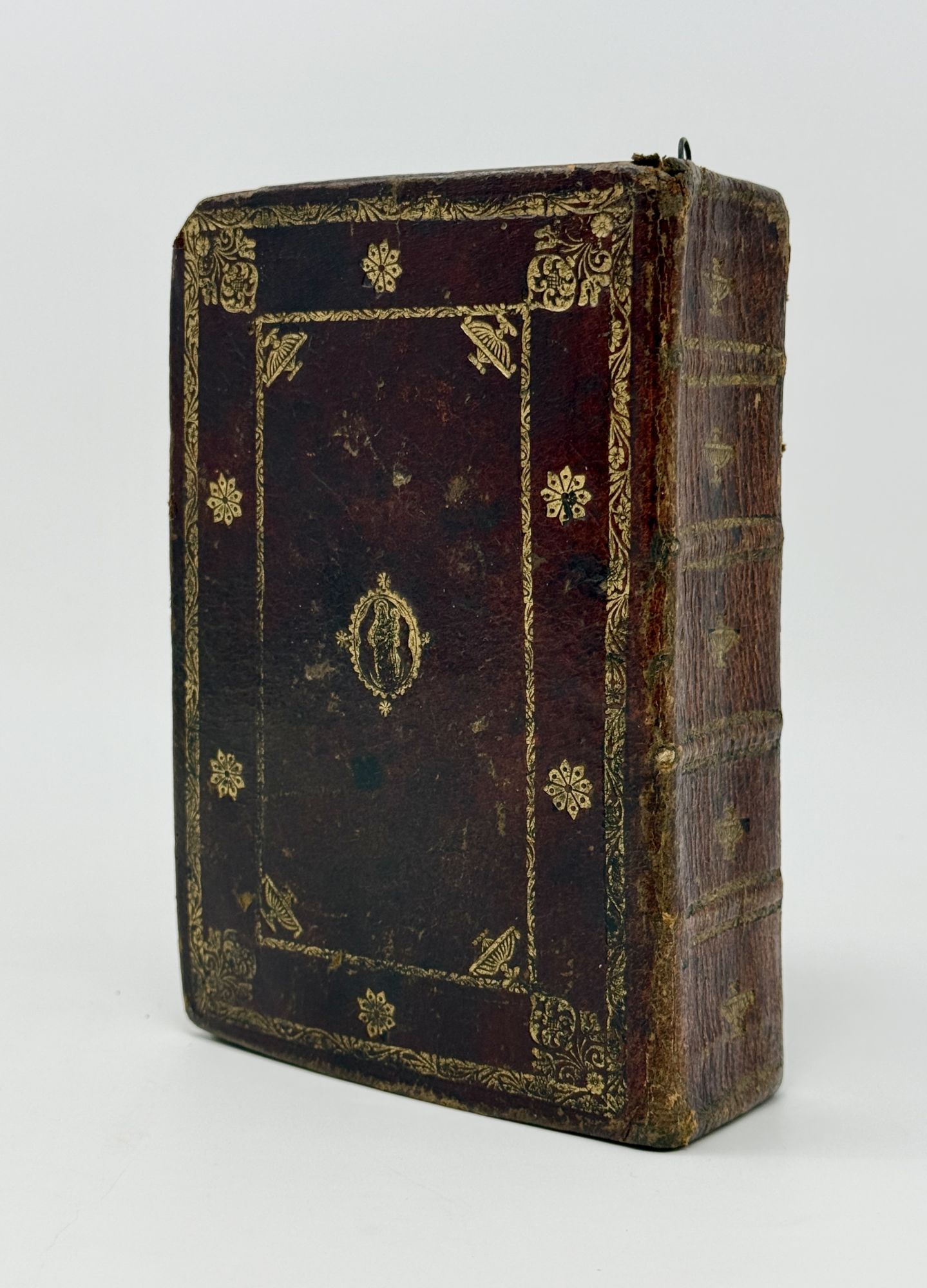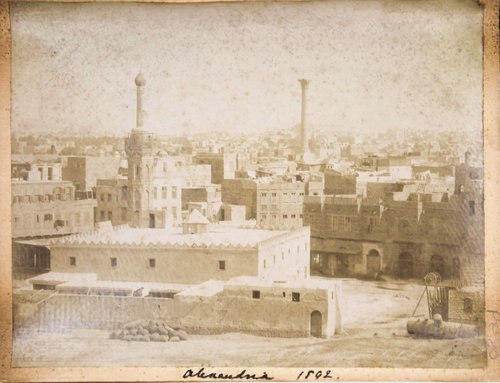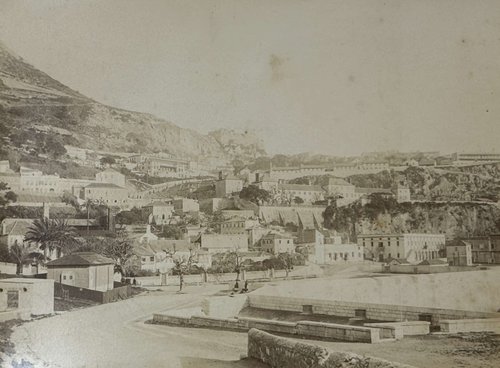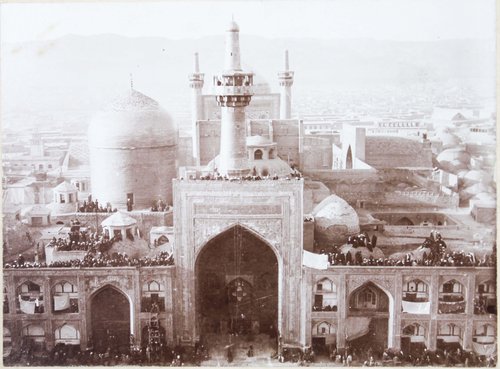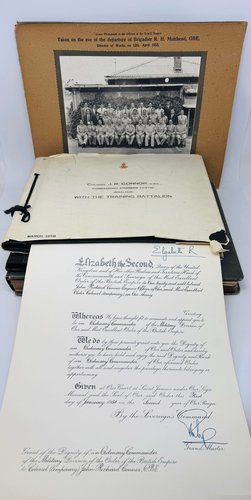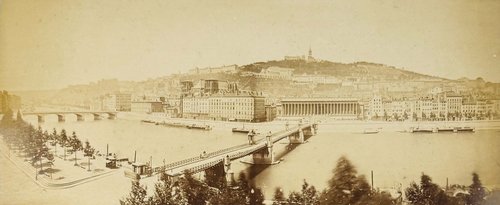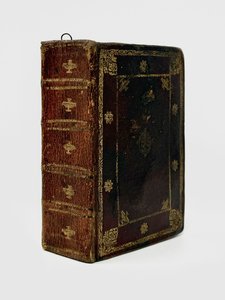
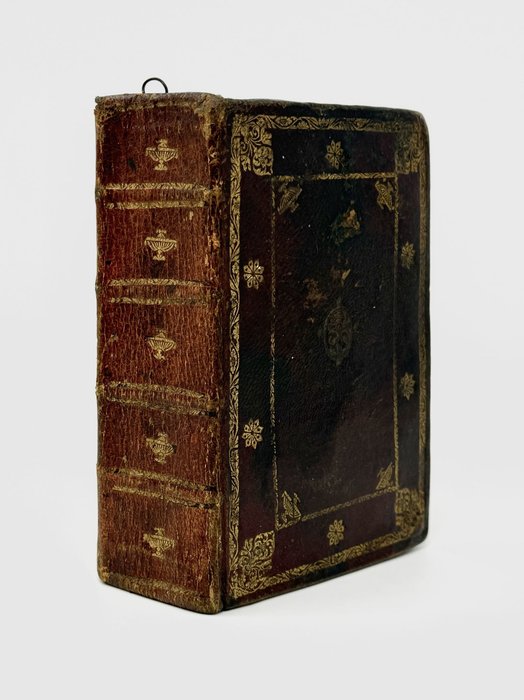
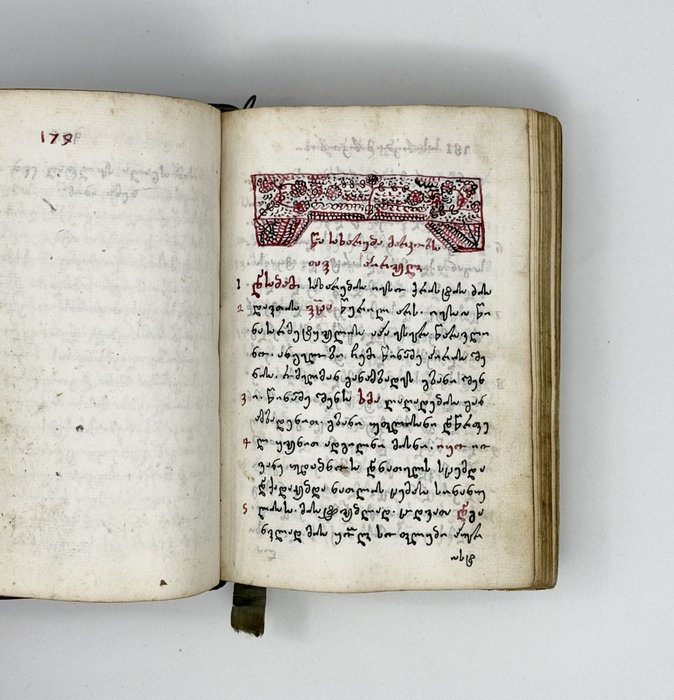
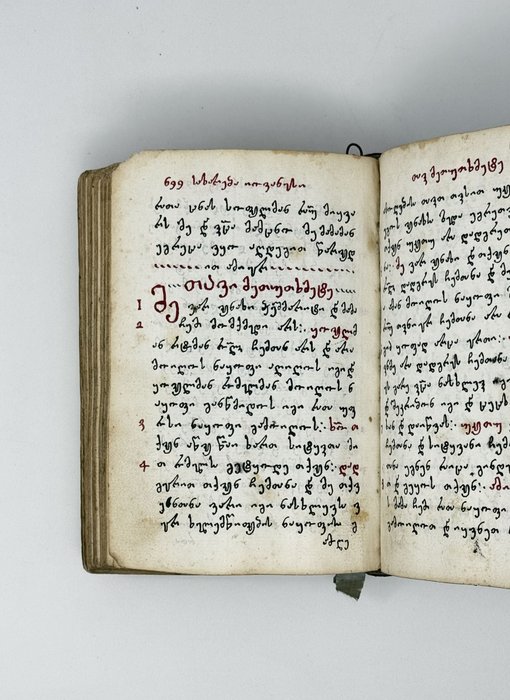
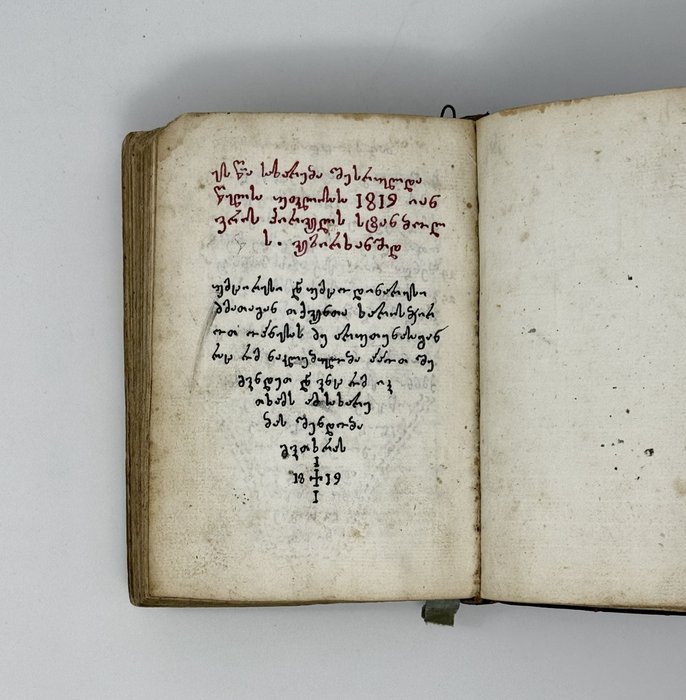
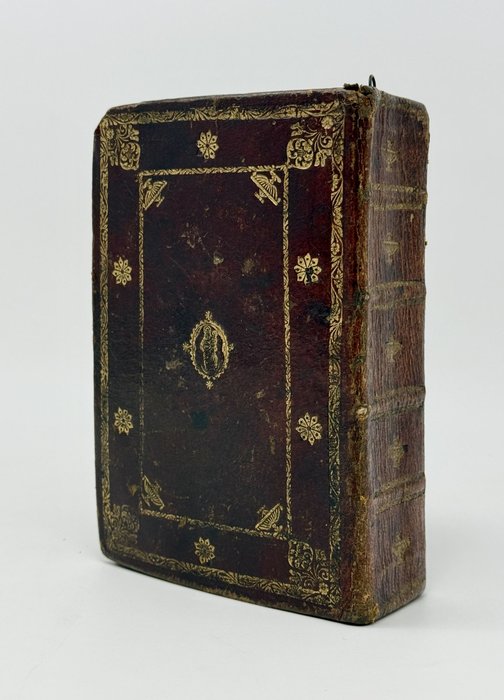
#BK2338
1819
739 pp. 17x11,5 cm. Original manuscript on paper. In Georgian. In one hand, basic ornamentation. Majority of the first two pages are lost, otherwise in very good condition and complete. Full leather morocco binding. Gilt ornaments on the spine with raised bands and on the covers. Marbled paper endpapers. Binding is slightly rubbed, but overall in very good condition. Clean inside. Two inscriptions at the first blank pages, with the list of goods in period hand, possibly a draft of a will: ‘linen, large cloth, suit, 7 pairs of waistcoats and socks, dressing gown, 1 suit, 2 tablecloths, 1 sheet, 4 my small cups, the next 2 starched shorts, jacket and sweater, 28 small pairs of towels’ in Georgian.
The colophon reads: ‘This holy Gospel has been finished on 1st of January, 1819 in Istanbul, in Vezirhane by the least and most ignorant of brothers, Arutuna Kharischirashvili, the son of Oganez, if anyone reads this, he humbly asks for your forgiveness’.
Incredible example of the Georgian gospel from relatively unknown scriptorium – the one based in Istanbul area of Çemberlitaş in Fatih district. Vezir Han, where this book was written, is a historic inn, that was built 1659-60, it was built by Fazıl Ahmet Paşa to be included in the Köprülü Complex. Vezir Han at some point in XIXth century became an Inn for Georgian Catholics, that were moving to Istanbul from Georgia. Later in became the official quarters for Bomonti Georgian Catholic Church, that has opened in 1861. The Georgian Catholic migration to Istanbul was caused by Russo-Turkish War of 1828–29, when the Russians captured the Meshkhet-Javakheti region of Georgia and forced the Catholic Georgians living in the region to emigrate. An estimated 10,000 Catholic Georgians moved to Istanbul. The Catholic Georgian Church and Monastery was founded in 1861 on the initiative of priest Petre Kharischirashvili, one of the Georgian emigrants and a likely relative of our scribe, with whom he shares the last name (the surname Kharischirashvili is coming from Akhaltsikhe in Southern Georgia). Vezir Han has been damaged in 1894 Istanbul Earthquake but survived – and now is accessible as a tourist sight.
The manuscript is important as token of Georgian population of Istanbul pre events of 1828-29 war. It is known that Georgians have lived in Galata since Byzantine times, and the Georgian merchants were selling their metal products and knives around the area, according to the town description of 1793. But very little is known about the daily lives and beliefs of these people: according to the book İstanbul gürcüleri / Eugenio Dallegio D'Allesio; Türkçesi Fahrettin Çiloğlu, 2003. [i.e. Georgians in Istanbul 2003] in the area of Gürcü Kapı the Georgians were quickly losing their identity, taking Ottoman names or identifying themselves as Armenians, not keeping the Christian faith. This manuscript is a strong argument against this notion on the loss of the national Georgian identity: the codex can be seen as a link between the pre-1828-29 wave of Georgian Christians coming and eventually establishing a monastery and a press in Istanbul (that has produced around 200 printed titles in Georgian and French), and the descendants of Georgians, that has lived in the city since Byzantine times.
We couldn’t find the mention of the scribe in Vezir Han in Georgian Institute of Manuscripts in Tbilisi, nor in the collections outside of Georgia.

